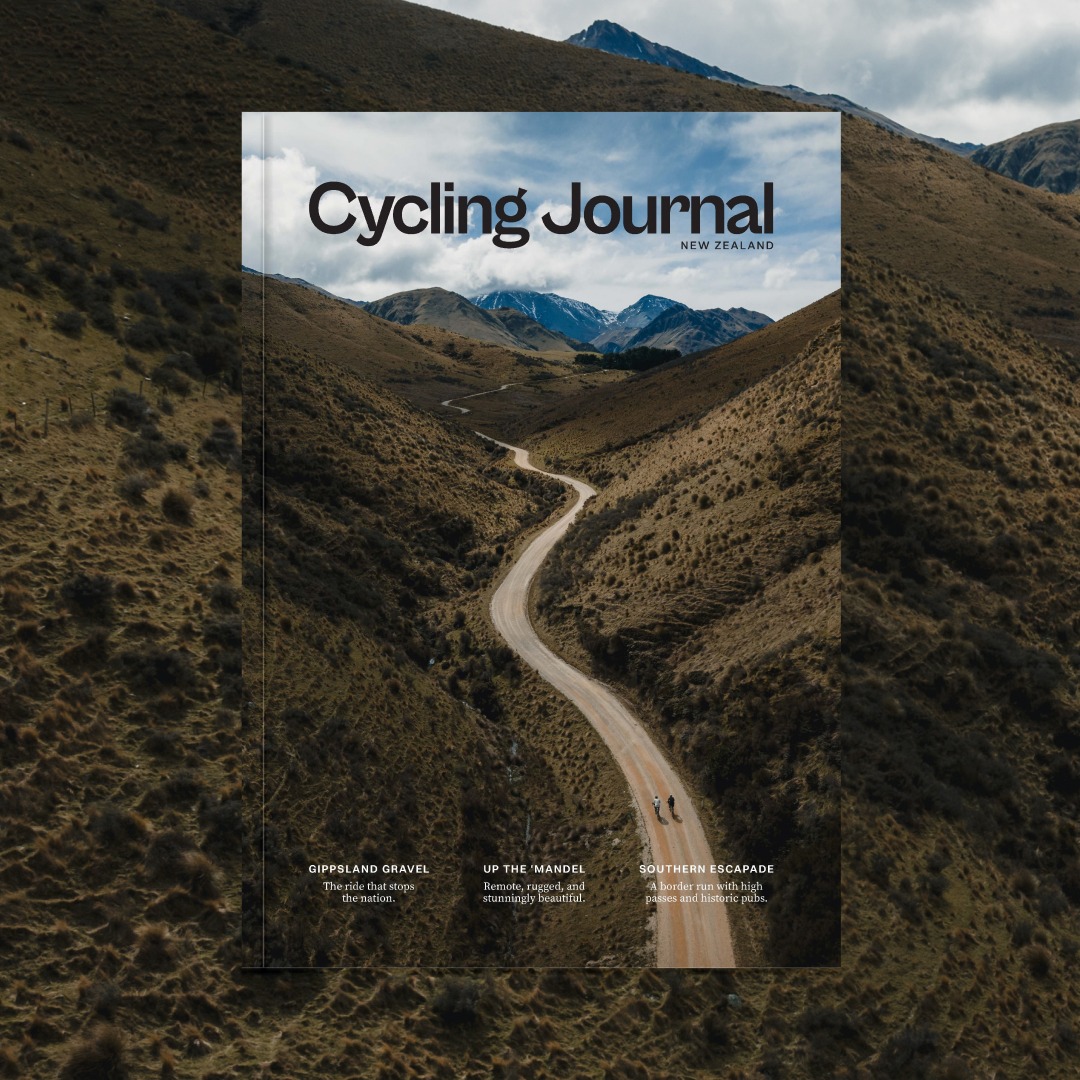Words Liam Friary
Images Cameron Mackenzie
RRP $7300
Distributor Commencal NZ
Let’s be honest, gravel biking is really just early ’90’s mountain biking. Interestingly, the start of this current wave of popularity in the genre was driven by more road-focused brands, or at least those who were looking to add another revenue stream to their line sheet.
Most of the multi-genre brands have added gravel bikes to their ranges over the years, although pure-play MTB companies have been slower to jump on board the gravy train, many opting to simply have a cyclocross bike or two in their range, as their only drop-bar bikes.
Times are changing though, and brands not only have a gravel bike in their lineup; as the segment becomes more granular, sub-genres are appearing and what was once a chasm between mountain bikes and gravel bikes is now more of a crack. As the demand for more adventure- based bikes has increased, we’re starting to see more purist mountain bike brands embrace the culture and build bikes to cater to it.
Commencal has been one of the mainstays in the downhill MTB racing space since its creation in 2000. Max Commencal, the BMIC (Big Man In Charge) enjoyed earlier racing success with SUNN Bicycles, a BMX company he formed in 1984. By the early 90’s, SUNN shifted their focus to Downhill MTB racing. Underneath names like Nicolas Vouilloz, Anne-Caroline Chausson, and other greats, the SUNN Downhill team amassed multiple world titles and their riders remain some of the winningest to this day.
Commencal have continued the SUNN racing HISTORY; at any World Cup Downhill, across all categories you’ll likely see a Commencal rider on a podium. This hunger for competition is what drives the development and direction for the now global, direct-to-consumer brand.
Seldom does a brand introduce a gravel bike as their first drop-bar offering. Not ones to follow the pack, Commencal have done just that. No previous cyclocross or road bikes to draw on, but a completely fresh entry to the segment. They have offered the flat-bar FCB (Fast City Bike), do-it-all commuter bike for some time but it shares few similarities with the gravel and adventure focussed 365 rig.
The 365’s frame and fork follow Commencal’s decade-long dedication to using only alloy for their frames, eschewing the use of any carbon fibre. The chassis uses the same material used for most of their mountain bikes, welded up from 6069 T4/ T6 alloy. The use of triple-butted, hydroformed tubes allows them to keep the weight to a palatable figure but, more importantly, fine-tune the ride characteristics and comfort of the bike.
Curiously, the bottom bracket is a press-fit style. I would have hoped for a threaded BB shell on an alloy frame these days, for better longevity – and to help keep any future creaks at bay.
The downtube has a curious channel the entire way down its underside, starting out shallow at the top and becoming around 15mm deep by the bottom bracket. Apparently, this unique tube shape came about to help tune the feel of the bike, and stop as much grime being flung up to the rider. Judging by how much cow muck I’ve had to clean out of the channel, it seems to work.
Let’s talk about the fork. She’s a long one, and not light, but it’s obviously overbuilt for a reason – and it sure gives you confidence when you’re attacking some trail or getting a bit rowdy. It’s stiffer than any other fork on a similar bike I’ve come across, keeping the whole package feeling stout, accurate, and responsive, if somewhat harsh at times. I do wonder if they missed a trick here as the bike is just begging for a suspension fork – something that would further increase the bikes comfort and capability.
Looking over the geometry, it’s fair to say there’s a definite lean towards a mountain bike – more so than any of the slew of current popular gravel bikes – although it doesn’t push too far into MTB territory; a comfortable blend of traditional and progressive.
As the demand for more adventure-based bikes has increased, we’re starting to see more purist mountain bike brands embrace the culture and build bikes to cater to it.
Let’s deal with the elephant in the room: the cables routed through the headset. I’ve been fervently anti-headset-routed cables since they began appearing on recent releases, particularly on any bike that’s not aero-focussed. I’ve warmed slightly to the setup after spending some time on this bike, though. Why? Provided the bike is running wireless gears like this one, then we’re only dealing with two brake lines going through the headset. They’re pretty trouble-free most of the time, so the likelihood of having to pull everything apart to reroute them is relatively small. The front of the bike is simple and clean, no cables protruding means bags mounted on the frame or handlebars go unhampered by cables. The system seems reasonably well sealed, so I wouldn’t imagine any extra servicing of the bearings would be needed from the norm. Rest assured though, if you did need to replace a headset bearing then you’d want to ensure you’re either paying someone else to do it, or have a very calm, patient demeanour if you’re tackling the task yourself.
The ‘Signature’ model we tested is fitted with the latest wireless SRAM Force XPLR AXS 12-speed groupset. The shifting was quick and precise in all conditions, and everything looks slick; it’s a cohesive package. I like the shape of the hoods and they’ve been comfortable in my hands for hours on end. It’s a pet peeve of mine when brands spec small rotors on a bike like this, so I was stoked to see 180mm rotors front and rear; regardless of the scenario, there was ample braking power on offer.
Up front, there’s a 40t chainring, coupled with a 10-44 spread out the back. The gear range is adequate, but I wouldn’t say ideal for this bike. I found it good for roughly 80% of the riding and terrain I took it on. Perfectly suited for rolling hills and trails, there’s lots of top-end speed available if you can push the highest gears, although with slow rolling gravel tyres this is a real struggle. When things got steep, however, there simply wasn’t a low enough gear. I found climbing – even on smooth gravel steeps, or up pinchy singletrack – was tough. If I was anything other than fresh, I’d be grinding out in the lowest gear, only exacerbated when loaded for bikepacking. I can see that Commencal was trying to get a gear range that would sit in the middle of the bell curve of its use case, and most of the time it’s ok, until it’s not – then you’re either unnecessarily taxing your legs or walking. I’d personally drop a smaller front ring on there, or go the whole hog and fit a SRAM Eagle, 10-52 cassette and compatible derailleur. Not a deal breaker, but room for change if the gearing doesn’t suit your riding.
Seat posts are usually not something to wax lyrical about on a gravel bike, but the inclusion of the ROCKSHOX Reverb XPLR 75mm dropper post gives reason for discussion. Having never used a dropper on a drop-bar bike before, I’ve always wondered, ‘why bother?’ Surely they’re just adding unnecessary weight and another part that will need servicing? Throw the bike down some singletrack, or even a rutted 4×4 track, and that dropper confirms the case for its use on the bike and I’m certainly a convert. Being able to drop the saddle out of the way throws the doors open for this bike to confidently handle much more than just ‘gravel’.
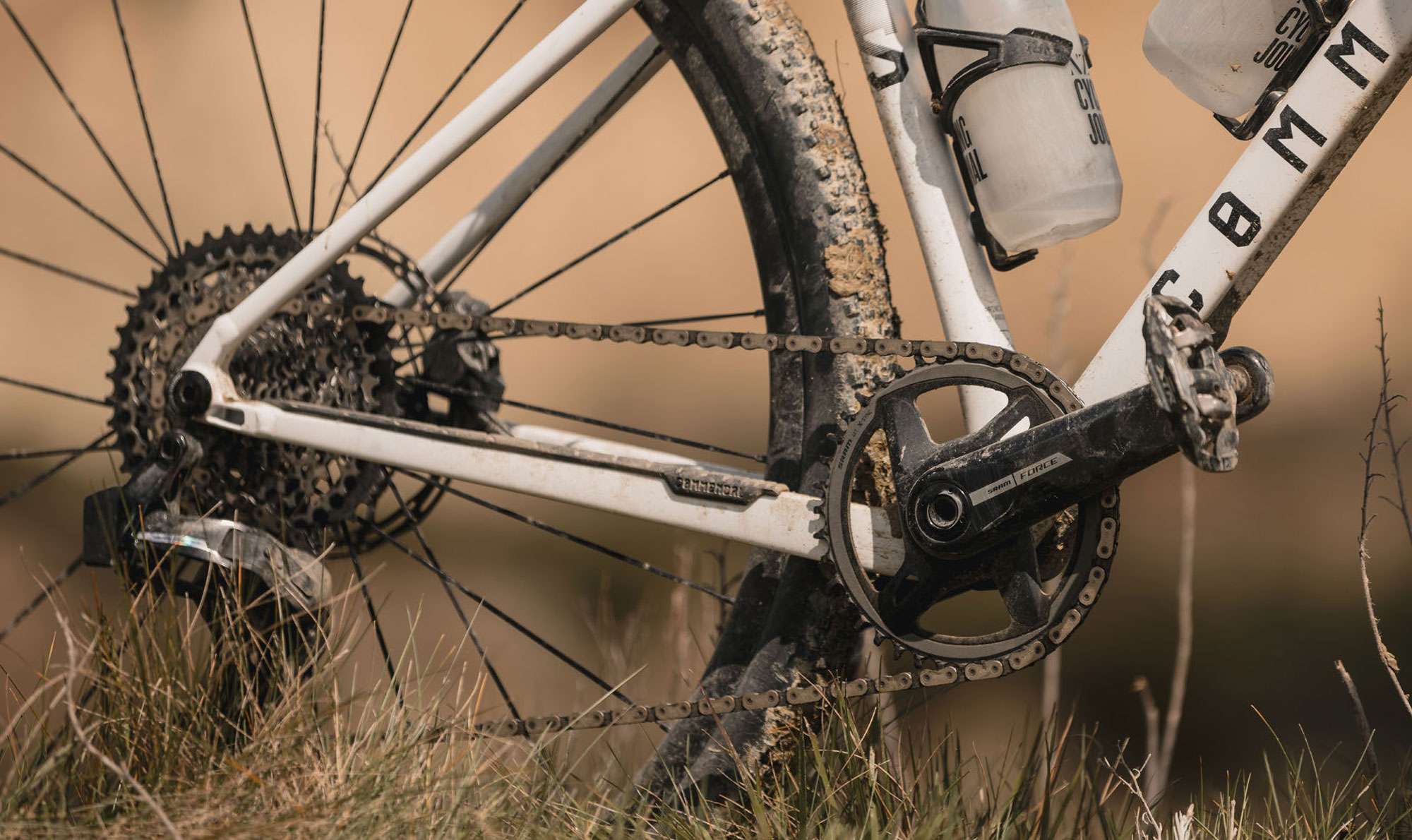
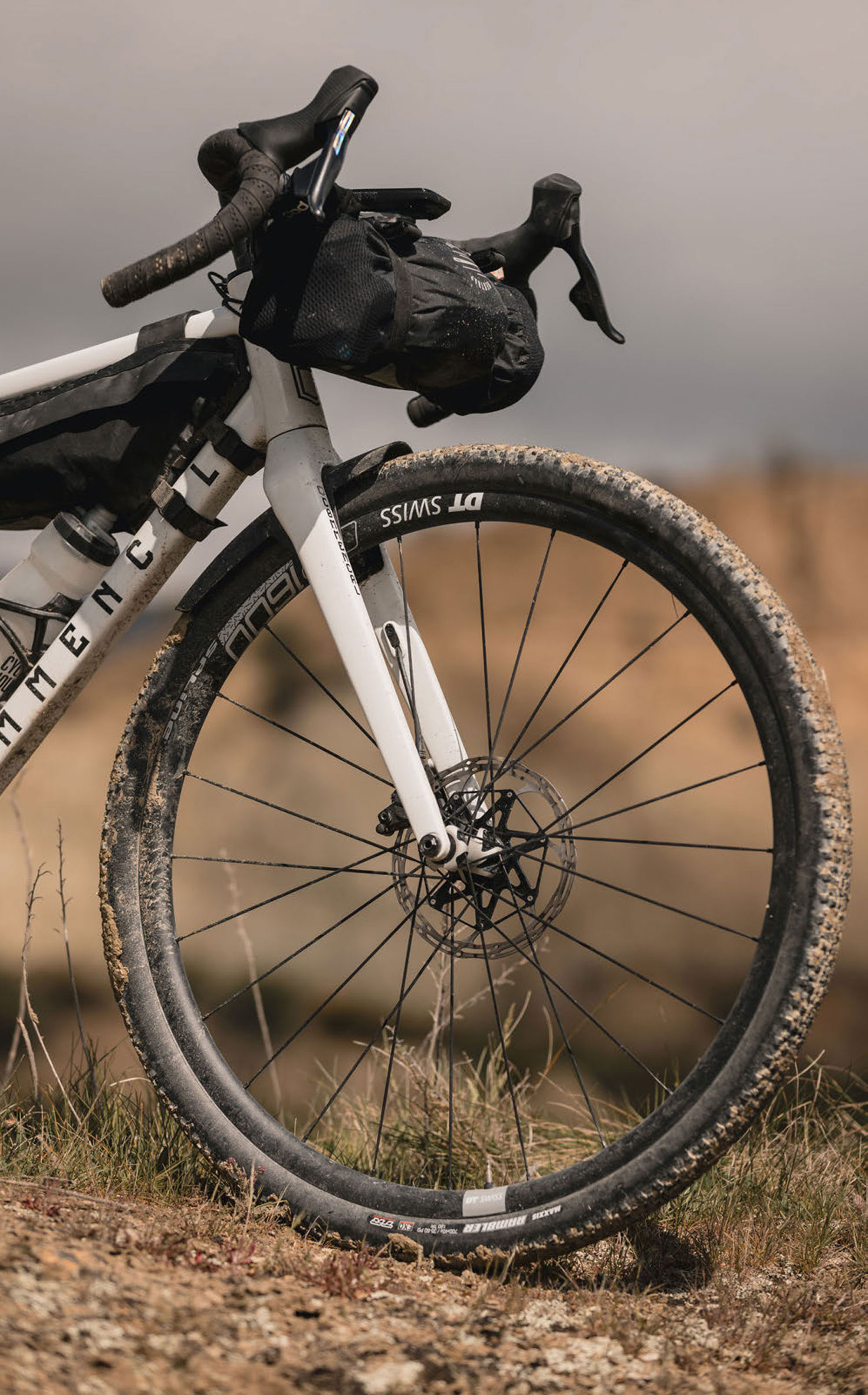
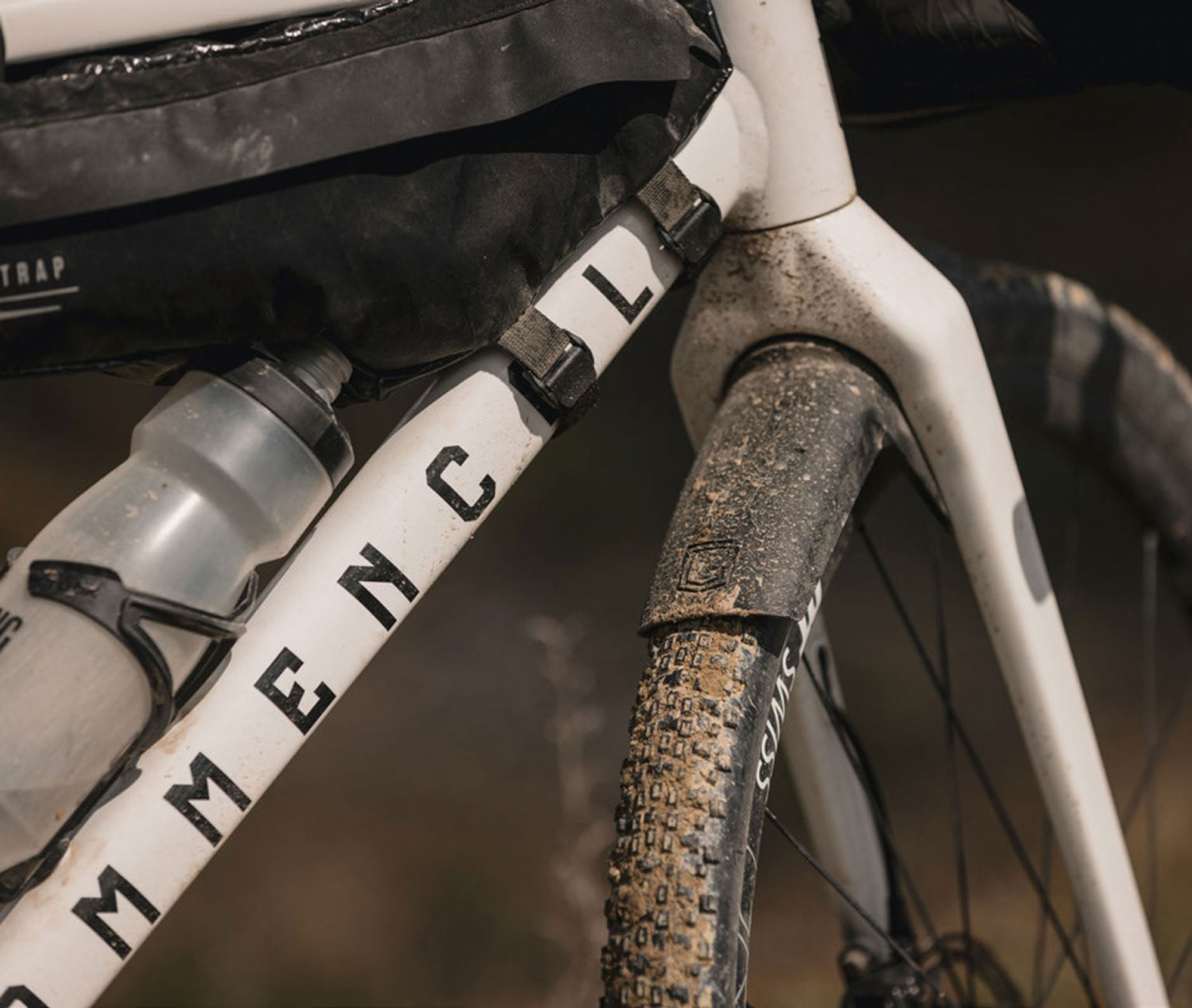
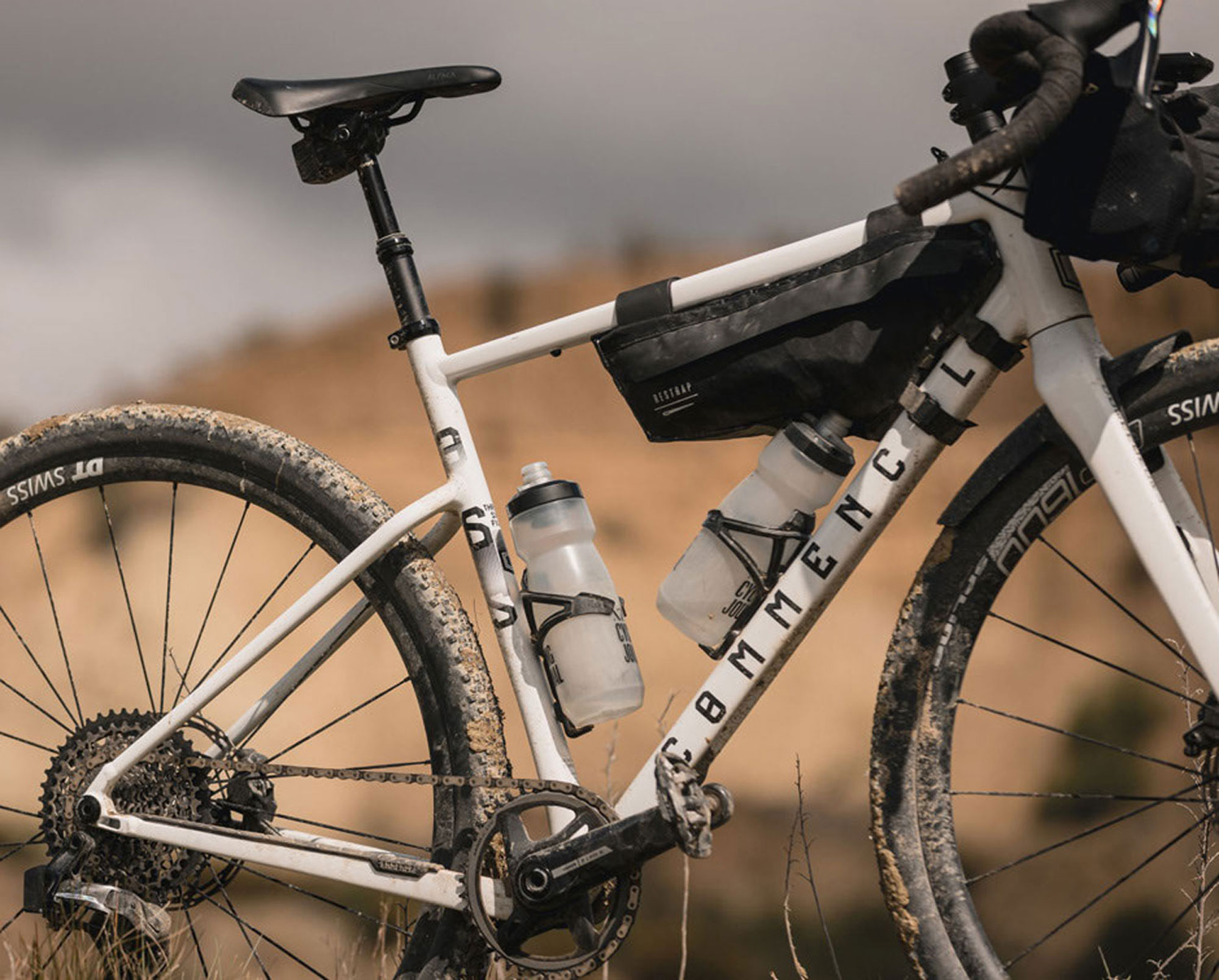
Sure, you can muddle about on the usual gravel roads, but this bike absolutely excels on light MTB terrain. Its mountain bike heritage shines across all aspects, reminding me of riding a cross-country hardtail of yesteryear.
I’m a big fan of DT Swiss wheelsets. They’re well- made and generally pretty bullet-proof. With this in mind, the DT GR-1600s specced on this bike are a great choice, suiting the entire breadth of use this bike could see, not pigeonholed to a particular style of riding. Quality DT 350 hubs laced with bladed spokes to a 25mm deep, 24mm internal and 28mm external width rim, meaning they’re perfectly matched to the supplied Maxxis Rambler tyres 45mm width.
Being pitched as an adventure bike, and sharing many traits of a mountain bike, the stem is aptly short and the bars wide. Ride Alpha, Commencal’s in-house component brand, supply their 70mm long ‘Gravel’ stem; visually, it’s very it’s very MTB styled. It does the job, and true to the Ride Alpha ethos, it “removes the superfluous and focusses on the essentials” in a reliable, durable package.
Spank provide the bars, and our Medium test bike featured the Flare 25 Drop Bar. A 31.8mm clamped, 460mm wide at the hoods, with a 65mm reach, 110mm drop, and 25° flare. That’s a heck of a handlebar width down in the drops, but one that is ideal for this bike. It took a little time to get used to the width but, after spending some time on it, I can see the advantages. The combination of short stem and wide bars was just plain exhilarating while descending, the cockpit setup really shone on singletrack, helping steady the ship when things got rowdy; and it helps give a sure-footed feel when cornering on gravel.
My only complaint about the cockpit is the bar- tape. The supplied Spank tape offers some decent cushioning, but there’s a severe lack of grip on it. I found slightly damp hands gripped much better than dry ones, but neither offered a level of grip I found secure enough – a necessary upgrade straight off the mark in my book, particularly if you want to push the limits of what the bike is capable of.
Along the underside of the top tube you find 3 frame bag mounts, with another on the downtube just behind the head tube. The front triangle has two regular bottle cage mounts, and another under the downtube, down near the bottom bracket, which also attaches a small rubber downtube bumper. That’s it though. No fender mounts, rack, or fork mounts feature; although, being a 100% alloy frame, adding clamp-on options would do the trick if extra were needed. A nice subtle touch is the use of Torx head bolts on the mounting points. Can we agree to ditch the venerable hex-key type and use these instead? A unique and very ‘mountain bike’ feature is the front mud-guard. I’m not entirely sure it does very much apart from limiting the clearance of the front tyre by taking up space. It works to a degree, but surely if they’d made it a few inches longer on either end it would have been much more effective.
The position on the bike is comfortable and neutral, not stretched out, and not too upright. Although the ‘stack’ measurement on the bike is a gargantuan 590 millimetres, I was still able to get the cockpit just low enough to comfortably balance my weight between my hands and seat, something I find makes a huge difference in how a bike descends… but that’s for another article.
My first couple of outings aboard the 365 were on some pretty bog standard champagne gravel and over three to four hours in the saddle. The bike did the trick, but didn’t get me too excited, and it was about as vanilla as the road conditions. To be honest, a bike of half the value would do the job just as well, but I couldn’t quite figure it out so I flipped the script and pedalled the road 22km from home out to the Mt Pirongia mountain bike trails. This ride is when everything clicked.
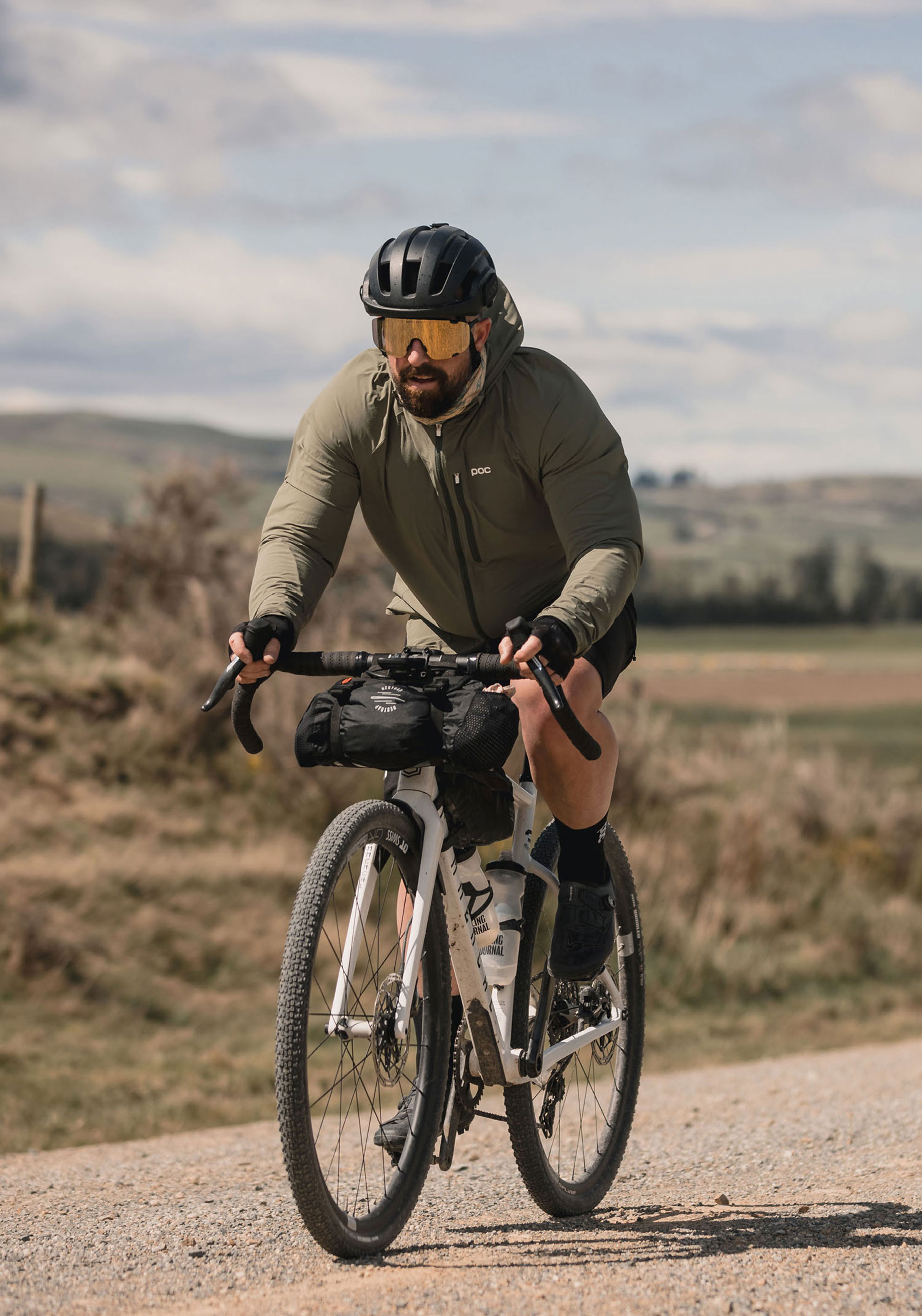
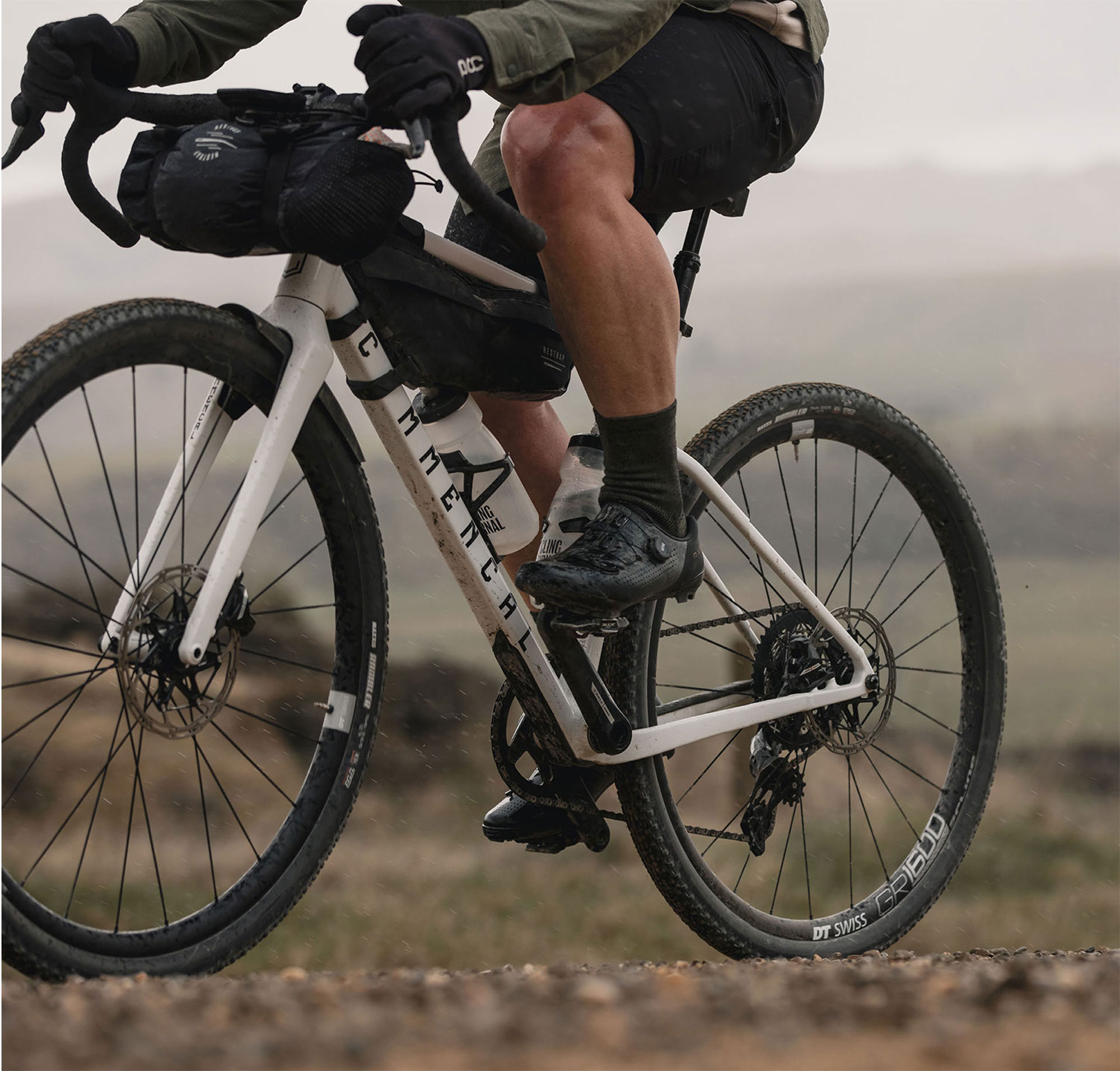
You could say it’s a Jack of all trades, master of none, but that would be underselling it.
Sure, you can muddle about on the usual gravel roads, but this bike absolutely excels on light MTB terrain. Its mountain bike heritage shines across all aspects, reminding me of riding a cross- country hardtail of yesteryear. I was surprised at how agile and responsive the bike was on singletrack, changing direction easily and, even on rough terrain, it was stable and well planted. The dropper post sure helped the 365 in real ‘off road’ scenarios; the ability to use more body language to manoeuvre the bike without being hung up on the saddle was a huge bonus and certainly unlocks a whole new level of rowdy on a bike like this.
The 365 climbs well, again reminding me of a mountain bike when on-trail. If only the gearing was a little lower it would be even better. I’ll go out on a limb and say that I doubt you’ll find a gravel-style bike that descends as well as this one when the gravel gets chunky, or on MTB trails. It holds its line well and with the 180mm disc rotors, there’s tonnes of stopping power available, coupled with ample grip. This bike gives the rider confidence to push hard on descents.
I was impressed with the traction on offer. The Maxxis Ramblers offer surprisingly good grip across a range of conditions. Unfortunately, the trade-off is that on hard-packed gravel and sealed roads, they’re pretty slow rolling – but not terrible. If you don’t need that level of traction then a faster tyre would transform how the bike rolls and maintains speed.
Commencal pitch the bike as being “designed for escape” and I reckon they’ve nailed that, as it doesn’t pigeonhole the bike into any single use. Calling it a gravel bike would seriously understate what it’s about. It’s the sort of bike I’ve enjoyed just rolling out my door and going for a ride, no agenda needed, no need for a GPX route; tar seal to gravel, to singletrack, river path, or simply to work – it’s been up for every adventure.
It’s not a gravel race bike, but you could race it. It’s not a mountain bike, but you can ride mountain bike trails on it. It’s not a bikepacking bike, although you could take it bikepacking. It’s not a commuter, but it is ideal for that, too. What it is, though, is an exceptionally well-rounded do-it-all bike. You could say it’s a Jack of all trades, master of none… but that would be underselling it.



